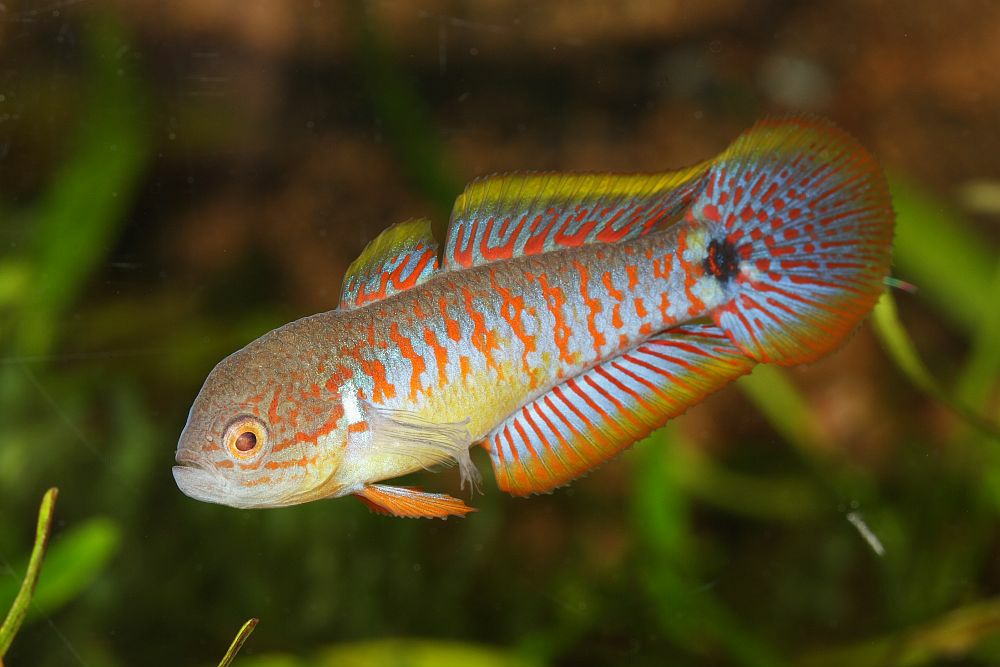Did you know that the Peacock Gudgeon is also known as the Peacock Goby or the Eye-spot Sleeper Goby in the aquarium trade? These alternative names often lead to confusion among aquarium enthusiasts, but rest assured, they all refer to the same stunning fish species.
Table of Contents
The Peacock Gudgeon, scientifically known as Tateurndina ocellicauda, belongs to the Eleotridae family, which includes other popular aquarium fish like sleeper gobies and tank gobies. This fascinating freshwater fish has captured the hearts of aquarists worldwide with its vibrant colors and interesting behavior.
One of the most striking features of the Peacock Gudgeon is its habitat preference. In the wild, these fish are native to the freshwater streams and rivers of Papua New Guinea and Indonesia, where they are typically found in slow-moving waters with plenty of vegetation and hiding spots. As mid-dwelling fish, they occupy the central areas of the water column in the aquarium.
When it comes to aquarium care, Peacock Gudgeons are relatively easy to maintain. They are peaceful, omnivorous fish that will readily accept a variety of foods, including flakes, pellets, and frozen or live options like brine shrimp and bloodworms. It’s essential to provide them with a well-planted tank that offers both hiding spots and open swimming areas.
Interestingly, a study conducted by the University of Papua New Guinea revealed that Peacock Gudgeons have a lifespan of approximately 3-5 years in captivity, provided they are given proper care and maintained in suitable water conditions.
One fun fact about Peacock Gudgeons is their unique courtship ritual. During breeding, males will display their vibrant colors and engage in a mesmerizing dance to attract females. Once a pair has formed, they will establish a small territory within the aquarium, where they will guard their eggs and fry.
In terms of tank mates, Peacock Gudgeons are generally compatible with other peaceful, similarly-sized fish. Some popular options include small tetras, rasboras, and peaceful bottom-dwellers like Corydoras catfish. However, it’s crucial to avoid housing them with larger, aggressive fish that may view them as prey.
Fun fact: Did you know that Peacock Gudgeons are known to be excellent jumpers? In the wild, they use this ability to navigate shallow waters and avoid predators. In the aquarium, it’s crucial to keep a tight-fitting lid to prevent any unwanted escapes!
Interestingly, the Peacock Gudgeon has a rich history in the aquarium trade. They were first introduced to the hobby in the 1960s and have since gained popularity among fish enthusiasts worldwide. Their unique appearance, engaging behaviors, and relatively easy care requirements make them an appealing choice for both novice and experienced aquarists alike.
Key Information
The Peacock Gudgeon (Tateurndina ocellicauda) is a stunning freshwater fish that captivates aquarium enthusiasts with its vibrant coloration. Males, in particular, display a mesmerizing array of iridescent blue, green, and purple hues across their bodies, while their fins are adorned with intricate patterns and spots. Females, although less colorful, still possess an attractive appearance with subtle shades of brown and grey.
| Family | Eleotridae |
| Price | $5 – $15 |
| Common Names | Peacock Gudgeon, Peacock Goby, Eye-spot Sleeper Goby |
| Variants | None known |
| Ideal Tank Size | 20 gallons or larger |
| Water Parameters | Temperature: 72-82°F (22-28°C), pH: 6.5-7.5, Hardness: 5-20 dGH |
| Lifespan | 3-5 years |
| Full Size | 2.5-3 inches (6-8 cm) |
| Natural Environment | Freshwater streams and rivers of Papua New Guinea and Indonesia |
| Behavior | Peaceful, mid-dwelling, territorial during breeding |
| Habitat Preference | Slow-moving waters with vegetation and hiding spots |
| Aquarium Decoration | Well-planted with hiding spots, open swimming areas, dark substrate, driftwood, rocks |
| Ideal Tank Mates | Small, peaceful fish like tetras, rasboras, and peaceful bottom-dwellers like Corydoras catfish |
| Fish to Avoid | Larger, aggressive fish that may view them as prey |
| Best Foods/Diet | Omnivorous; accepts flakes, pellets, frozen, and live foods like brine shrimp and bloodworms |
| Disease | Susceptible to common freshwater diseases if water quality is poor |
| Sex-switch | Unknown |
| Gender Differences | Males are more colorful and have larger fins compared to females |
| Care Level | Easy |
| Breeding Level | Moderate; spawning occurs in small territories within the aquarium |
Ideal Tank Mates
When choosing tank mates for Peacock Gudgeons (Tateurndina ocellicauda), it’s essential to consider their peaceful nature, size, and habitat preferences. Peacock Gudgeons thrive in a community aquarium setting with other non-aggressive fish that have similar water requirements and won’t outcompete them for food or space.
Ideal tank mates for Peacock Gudgeons should be small to medium-sized, peaceful, and adaptable to the same water conditions. These fish should also occupy different levels of the aquarium, ensuring that there is minimal competition for territory and resources.
Here are 15 ideal tank mates for Peacock Gudgeons, along with explanations of why they are compatible:
1. Neon Tetras (Paracheirodon innesi)
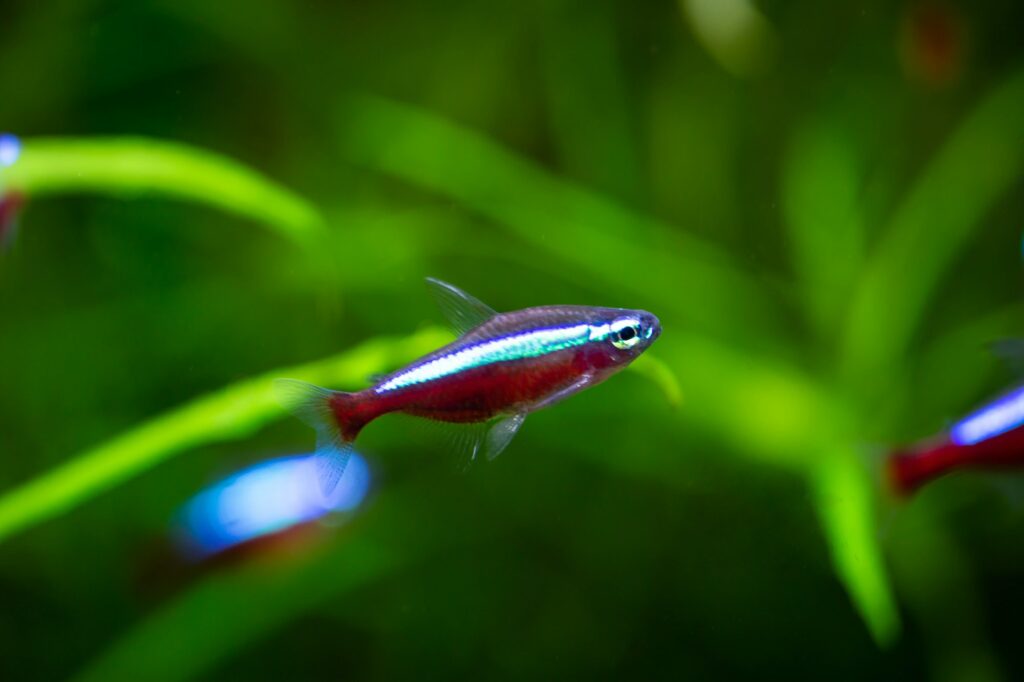
Neon Tetras are small, peaceful, and colorful fish that occupy the upper levels of the aquarium. They have similar water requirements to Peacock Gudgeons and won’t compete for territory or food.
2. Ember Tetras (Hyphessobrycon amandae)
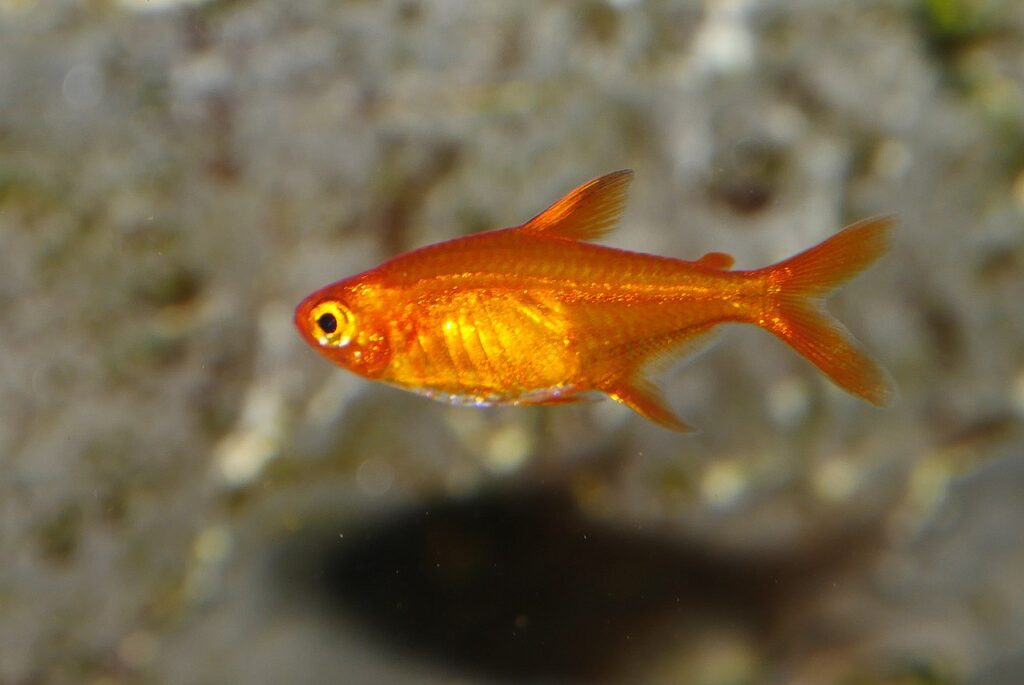
Ember Tetras are another small, peaceful species that can coexist harmoniously with Peacock Gudgeons. They prefer the upper levels of the aquarium and have a stunning orange coloration that complements the Peacock Gudgeon’s iridescent hues.
3. Harlequin Rasboras (Trigonostigma heteromorpha)

Harlequin Rasboras are peaceful, schooling fish that occupy the middle levels of the aquarium. They have similar water requirements to Peacock Gudgeons and won’t compete for food or territory.
4. Cherry Barbs (Puntius titteya)
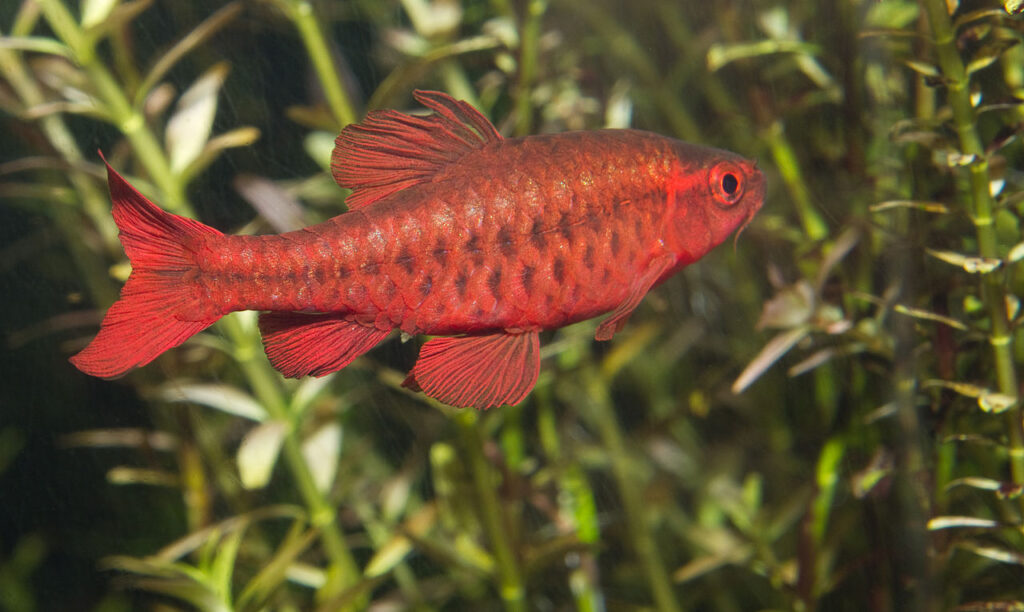
Cherry Barbs are small, peaceful fish that add a pop of color to the aquarium. They prefer the middle levels of the tank and have similar water requirements to Peacock Gudgeons.
5. Corydoras Catfish (Corydoras spp.)
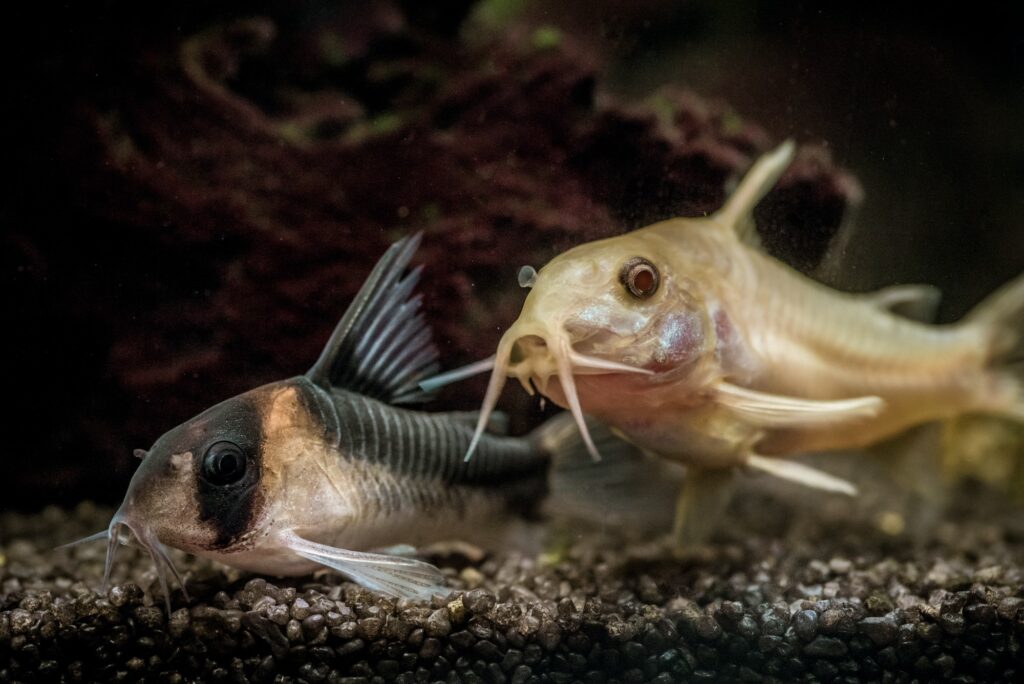
Corydoras Catfish are peaceful bottom-dwellers that help keep the substrate clean. They have a calm demeanor and won’t disturb Peacock Gudgeons, making them excellent tank mates.
6. Otocinclus Catfish (Otocinclus spp.)
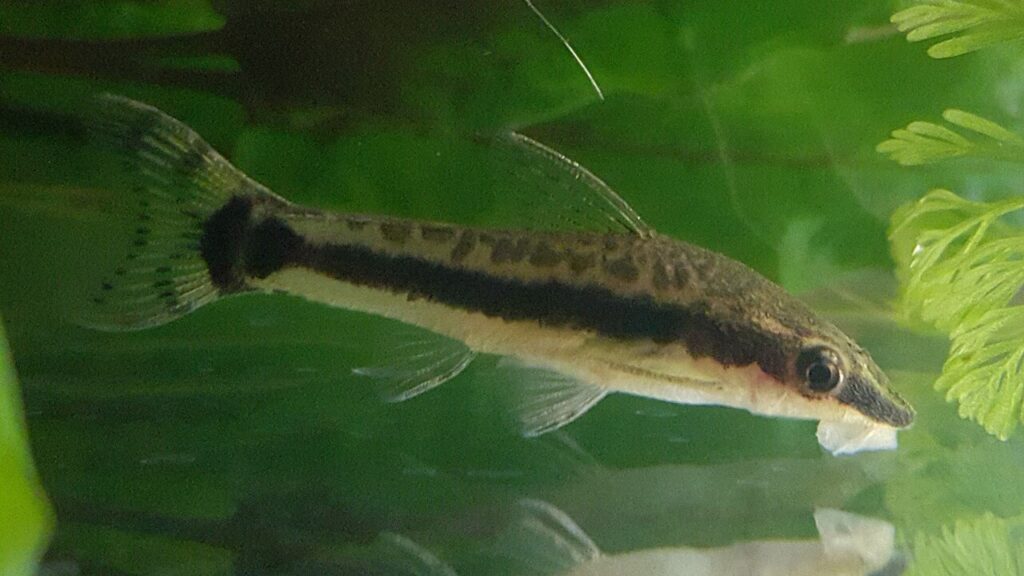
Otocinclus Catfish are small, peaceful algae-eaters that help maintain a clean aquarium. They occupy the lower levels of the tank and won’t compete with Peacock Gudgeons for food or space.
7. Kuhli Loaches (Pangio kuhlii)
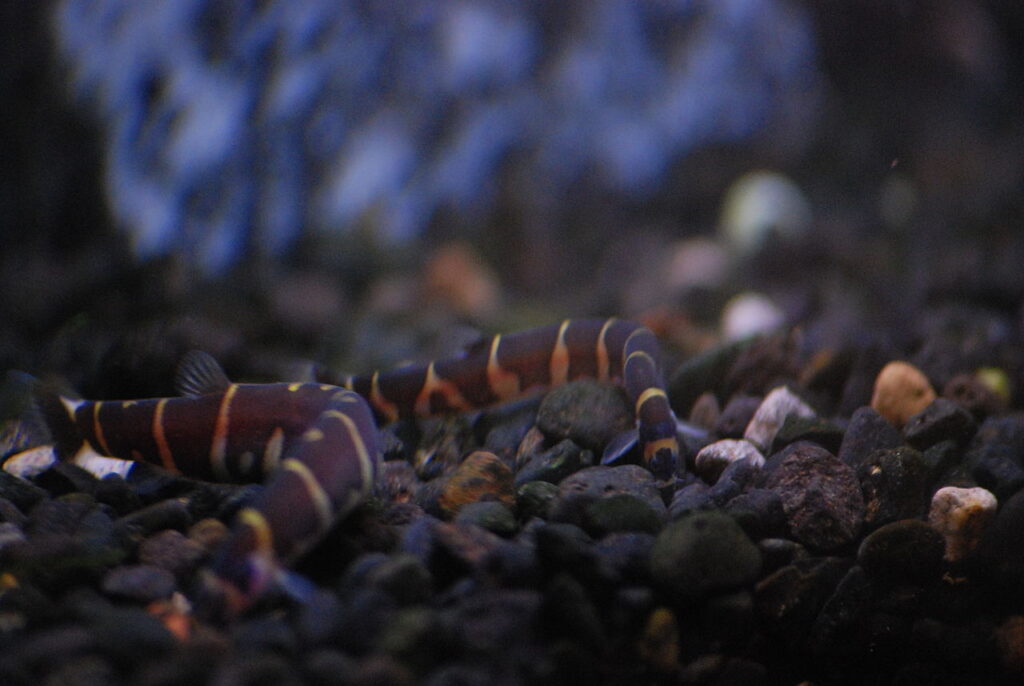
Kuhli Loaches are peaceful, eel-like fish that spend most of their time hiding in the substrate or among plants. They have similar water requirements to Peacock Gudgeons and won’t cause any disturbances.
8. Endler’s Livebearers (Poecilia wingei)
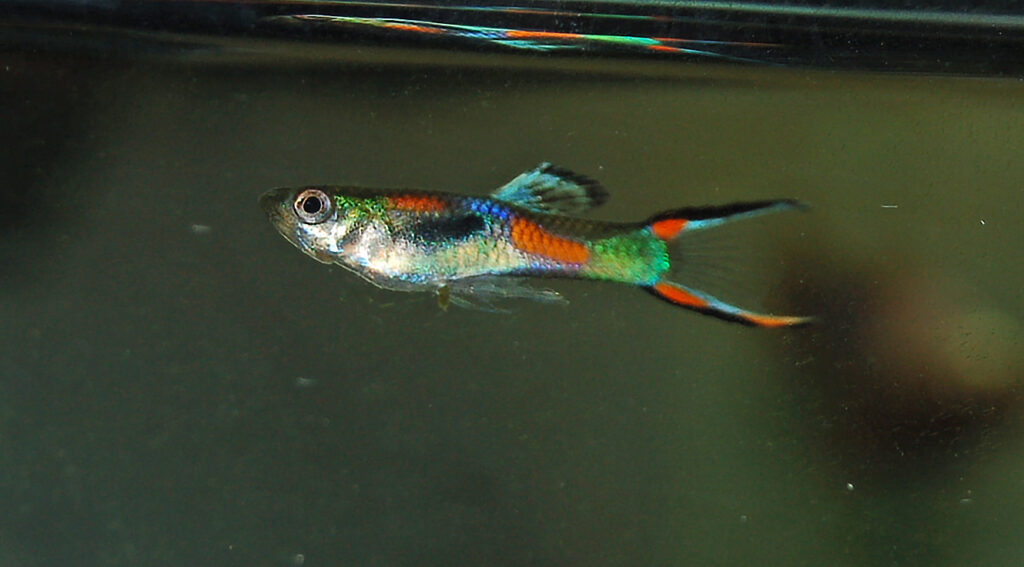
Endler’s Livebearers are small, colorful fish that occupy the upper levels of the aquarium. They are peaceful and have similar water requirements to Peacock Gudgeons.
9. Celestial Pearl Danios (Celestichthys margaritatus)
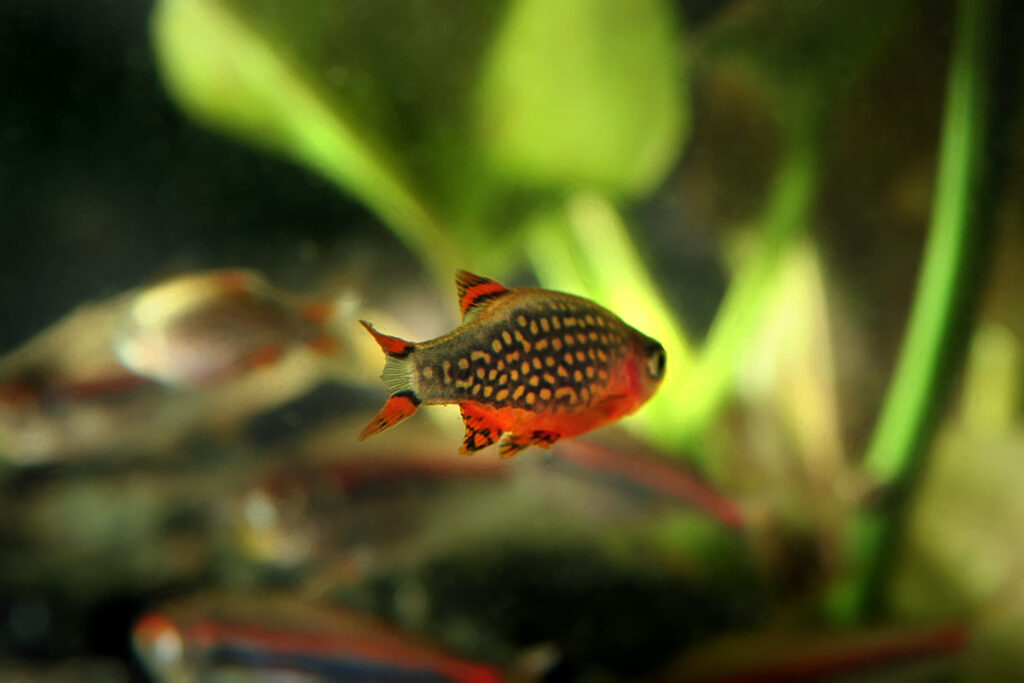
Celestial Pearl Danios are small, peaceful fish with a stunning appearance. They prefer the middle levels of the aquarium and have similar water requirements to Peacock Gudgeons.
10. Dwarf Gouramis (Trichogaster lalius)
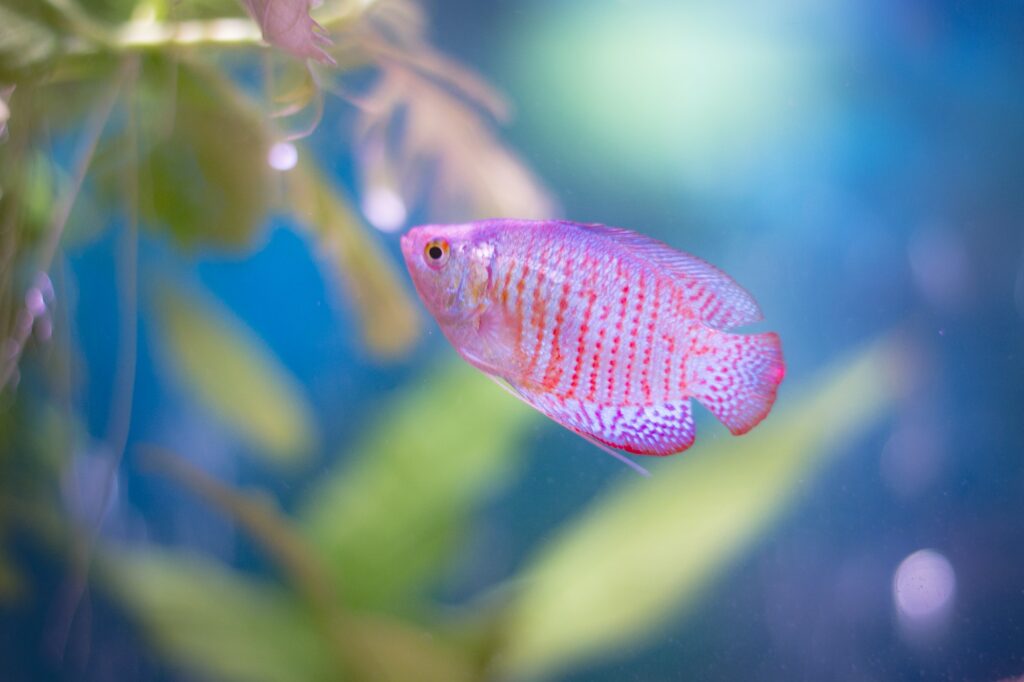
Dwarf Gouramis are peaceful, colorful fish that occupy the upper levels of the aquarium. They have a calm demeanor and won’t compete with Peacock Gudgeons for territory.
11. Pygmy Corydoras (Corydoras pygmaeus)
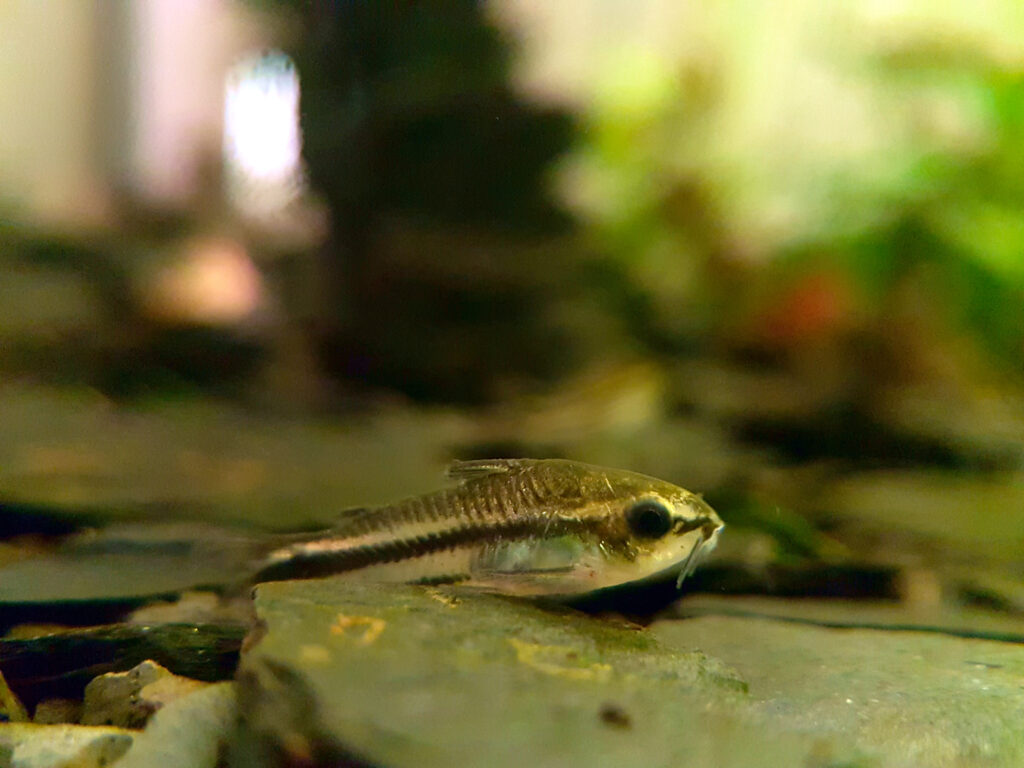
Pygmy Corydoras are tiny, peaceful bottom-dwellers that help keep the substrate clean. They have a gentle nature and won’t disturb Peacock Gudgeons.
12. White Cloud Mountain Minnows (Tanichthys albonubes)
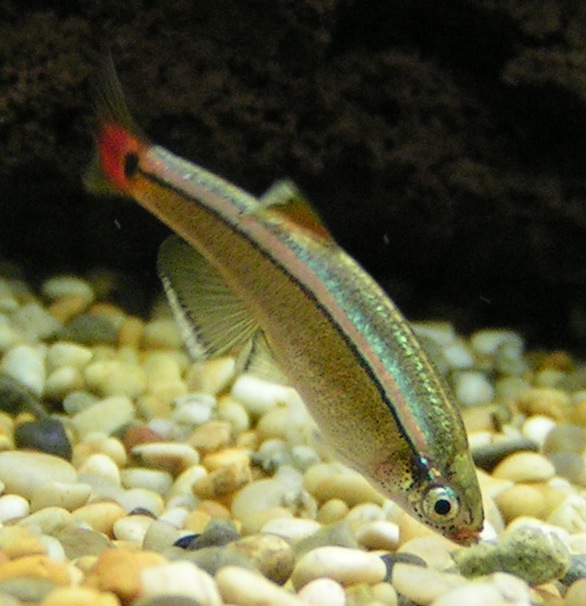
White Cloud Mountain Minnows are peaceful, hardy fish that occupy the upper levels of the aquarium. They have similar water requirements to Peacock Gudgeons and won’t outcompete them for food.
13. Lambchop Rasboras (Trigonostigma espei)
Lambchop Rasboras are peaceful, schooling fish that occupy the middle levels of the aquarium. They have similar water requirements to Peacock Gudgeons and won’t cause any disturbances.
14. Pygmy Hatchetfish (Carnegiella myersi)
Pygmy Hatchetfish are small, peaceful fish that occupy the upper levels of the aquarium. They have a unique appearance and won’t compete with Peacock Gudgeons for food or territory.
15. Honey Gouramis (Trichogaster chuna)
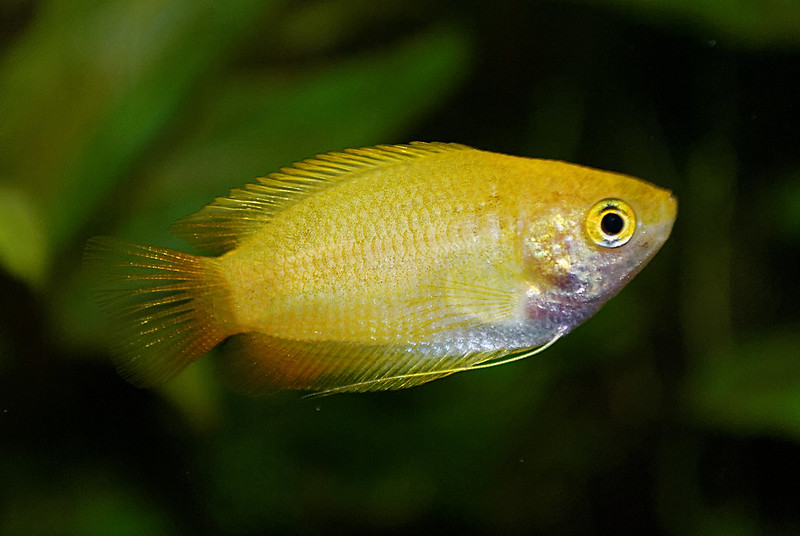
Honey Gouramis are peaceful, colorful fish that occupy the upper levels of the aquarium. They have a calm demeanor and similar water requirements to Peacock Gudgeons.
FAQs
How many Peacock Gudgeons should I keep in my aquarium?
It’s generally recommended to keep Peacock Gudgeons in pairs or small groups of 6-8 individuals. They are social fish that enjoy the company of their own species. In larger aquariums, you can keep multiple pairs or groups, provided there is ample space and hiding places for each fish to establish its own territory.
Can Peacock Gudgeons be kept with shrimp or other invertebrates?
Peacock Gudgeons are generally peaceful and can coexist with some larger shrimp species, such as Amano Shrimp or Ghost Shrimp. However, they may prey on smaller shrimp or shrimplets, so it’s essential to provide plenty of hiding spots for the shrimp to minimize the risk of predation.
Are Peacock Gudgeons jumpers?
Yes, Peacock Gudgeons are known to be excellent jumpers, especially when startled or during mating displays. To prevent them from jumping out of the aquarium, it’s crucial to keep a tight-fitting lid on your tank and ensure there are no large gaps or openings.
How often should I feed my Peacock Gudgeons?
Peacock Gudgeons should be fed small amounts of food 2-3 times a day. Offer a variety of high-quality foods, such as flakes, pellets, and frozen or live options like brine shrimp and bloodworms. Avoid overfeeding, as this can lead to poor water quality and health issues.
Can Peacock Gudgeons be bred in captivity?
Yes, Peacock Gudgeons can be bred in captivity with proper care and conditions. To encourage breeding, provide a well-maintained aquarium with plenty of hiding spots and spawning sites, such as flat stones or broad-leaved plants. Condition the breeding pair with high-quality foods and maintain stable water parameters. Once spawning occurs, the parents will typically care for the eggs and fry.
How can I tell the difference between male and female Peacock Gudgeons?
Male Peacock Gudgeons are generally more colorful than females, displaying vibrant shades of blue, green, and purple. They also have longer, more pointed dorsal and anal fins. Females, on the other hand, have a more subdued coloration and slightly rounder fins. During breeding, males will become even more intensely colored as they display for potential mates.
Are Peacock Gudgeons sensitive to changes in water parameters?
Like most fish species, Peacock Gudgeons can be sensitive to sudden changes in water parameters. It’s essential to maintain stable water conditions and perform regular water changes to keep the aquarium environment healthy. When introducing Peacock Gudgeons to a new tank, be sure to acclimate them gradually to avoid stress or shock.
